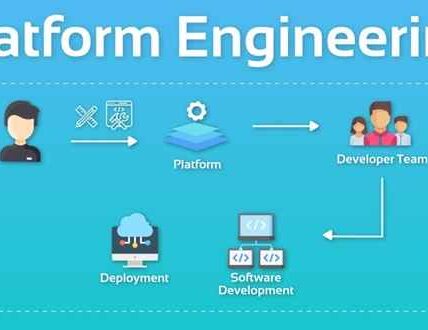Personal injury risks are an ever-present concern in business. As an entrepreneur or business owner, safeguarding your employees and customers from potential harm should be a top priority.
Proactive measures not only mitigate legal liabilities but also contribute to a safer and more secure working environment. In this article, we will explore some effective strategies to manage personal injury risks in your business, ensuring the well-being of all stakeholders.

Comprehensive Risk Assessment
Begin the process of managing personal injury risks by conducting a thorough risk assessment within your business. This involves identifying potential hazards and evaluating the level of risk associated with each.
Regular inspections and assessments should be scheduled, covering all areas of the workplace – from production floors to office spaces. Engage employees in this process, as they often possess valuable insights into potential risks that might be overlooked.
Ready.gov suggests that, during the risk assessment, try to identify weaknesses or vulnerabilities that may increase the susceptibility of your business to hazards. These can manifest as deficiencies in building construction, process systems, security, and loss prevention programs. Such vulnerabilities amplify the extent of damage during incidents.
Document all identified hazards and prioritize them based on the likelihood of occurrence and severity of impact. This information will serve as the foundation for developing targeted risk mitigation strategies.
Adequate Safety Equipment
Equip your business with the necessary safety gear and equipment to create a secure working environment. This includes providing personal protective equipment (PPE) such as helmets, gloves, goggles, and ear protection.
Install and maintain emergency equipment like fire extinguishers, first aid kits, and eye wash stations. Regularly check the functionality of safety devices such as smoke detectors and sprinkler systems.
Make it a priority to replace or repair any damaged equipment promptly. By ensuring that your business is well-stocked and prepared for emergencies, you empower employees to take an active role in their own safety.
Employee Training Programs
Investing in employee training programs is a proactive approach to reducing personal injury risks. According to Forbes, companies providing ongoing training are likely to retain 76% of their employees. You should develop comprehensive training modules that address specific job-related hazards and safety protocols to help employees perform better in their roles.
Include training on proper lifting techniques, machinery operation, and emergency response procedures. Regularly conduct refresher courses to ensure that employees stay up-to-date with safety measures.
Encourage a culture of responsibility and awareness, where employees actively participate in their own safety and the safety of their colleagues. By fostering a well-informed and prepared workforce, the likelihood of accidents and injuries is significantly diminished.
Robust Incident Reporting Systems
Establishing a robust incident reporting system is crucial for addressing potential risks promptly. Encourage a culture where employees feel comfortable reporting incidents without fear of reprisal.
Implement an easily accessible and confidential reporting mechanism, such as an online portal or dedicated reporting hotline. Regularly review and analyze reported incidents to identify patterns or recurring issues.
This data-driven approach enables you to address root causes and implement preventive measures effectively. Communicate the importance of reporting near-misses as they provide valuable insights into potential hazards before they escalate into more severe incidents.
Regular Equipment Maintenance
Regular maintenance of machinery and equipment is essential for preventing malfunctions that could lead to injuries. Establish a structured maintenance schedule that includes routine inspections, lubrication, and necessary repairs.
Train designated staff to conduct regular checks on equipment functionality and document any signs of wear or damage. Create a system for employees to report equipment issues promptly.
By addressing maintenance needs proactively, you reduce the risk of accidents while extending the lifespan of your machinery, promoting overall operational efficiency.
Adequate Insurance Coverage
Mitigate financial risks associated with personal injuries by securing comprehensive insurance coverage for your business. Liability insurance protects your business from legal claims and settlements in the event of an accident.
Workers’ compensation insurance provides financial support to employees who suffer work-related injuries or illnesses. Review and update your insurance policies regularly to ensure they align with the evolving needs and risks of your business.
Clearly communicate the existence and details of insurance coverage to your employees, fostering transparency and trust. Having adequate insurance coverage not only safeguards the financial well-being of your business but also demonstrates a commitment to supporting your workforce.
Adherence to Local Laws and Regulations
Ensure strict adherence to local laws and regulations governing workplace safety. Stay informed about safety standards specific to your industry and geographical location. Regularly review and update your safety protocols to align with any changes in legislation.
Let’s consider Arkansas as an example, where understanding and complying with state regulations is vital for effective personal injury risk management.
Arkansas has a robust framework of occupational safety laws administered by the Arkansas Occupational Safety and Health Administration (OSHA). Familiarize yourself with state-specific regulations, such as those related to workplace safety training requirements and reporting obligations.
In Arkansas, employers are mandated to provide training on specific safety topics, including hazard communication and bloodborne pathogens.
Arkansas businesses are subject to the state’s workers’ compensation laws, which provide benefits to employees who suffer work-related injuries or illnesses. Ensure your business maintains compliance with these laws to support your employees and protect your organization from legal complications. Justia notes that workers have up to 2 years to find a claim under these laws in most cases.
Rogers is one of the cities in Arkansas that is known for its vibrant commercial and industrial activities. It’s very welcoming toward startups, offering a conducive environment for business growth and innovation. This makes workplace safety a crucial aspect for businesses operating in the area.
Beyond the broader state regulations, there might be specific local considerations and guidelines that businesses in Rogers need to be mindful of. You might want to get in touch with a Rogers personal injury lawyer to gain insights into any city-specific regulations related to workplace safety. An expert local attorney can provide valuable guidance tailored to the specific circumstances of your business in Rogers.
According to Keith Law Group, local lawyers are invaluable allies, equipped with a profound understanding of the legal terrain. This ensures tailored guidance and support for businesses in any location.
Consider building a collaborative relationship with a local attorney, involving them in the ongoing review and enhancement of your safety protocols. This proactive approach not only strengthens your compliance efforts but also positions your business to respond effectively to any unforeseen legal issues.
Continuous Improvement and Monitoring
Implementing a system of continuous improvement is crucial for maintaining a proactive stance against personal injury risks. Regularly monitor and evaluate the effectiveness of your safety protocols.
Encourage feedback from employees and use this information to identify areas for improvement. Stay informed about industry advancements, emerging risks, and new technologies that can enhance workplace safety. Foster a culture of adaptability and innovation where the business is responsive to changing circumstances.
Periodically review and update your risk assessment based on evolving factors. By committing to continuous improvement, your business remains resilient and well-prepared to address new challenges in the realm of personal injury prevention.
In conclusion, safeguarding against personal injury risks demands a proactive commitment to thorough risk assessments, comprehensive employee training, and a culture of continuous improvement. Equipping the workplace with proper safety gear, maintaining incident reporting systems, and adhering to local regulations further fortify the defense against potential harm.
The integration of robust maintenance schedules, adequate insurance coverage, and collaboration with local legal experts ensures a holistic approach to risk management. By prioritizing safety, businesses protect their workforce while fortifying their resilience in the face of evolving challenges.














